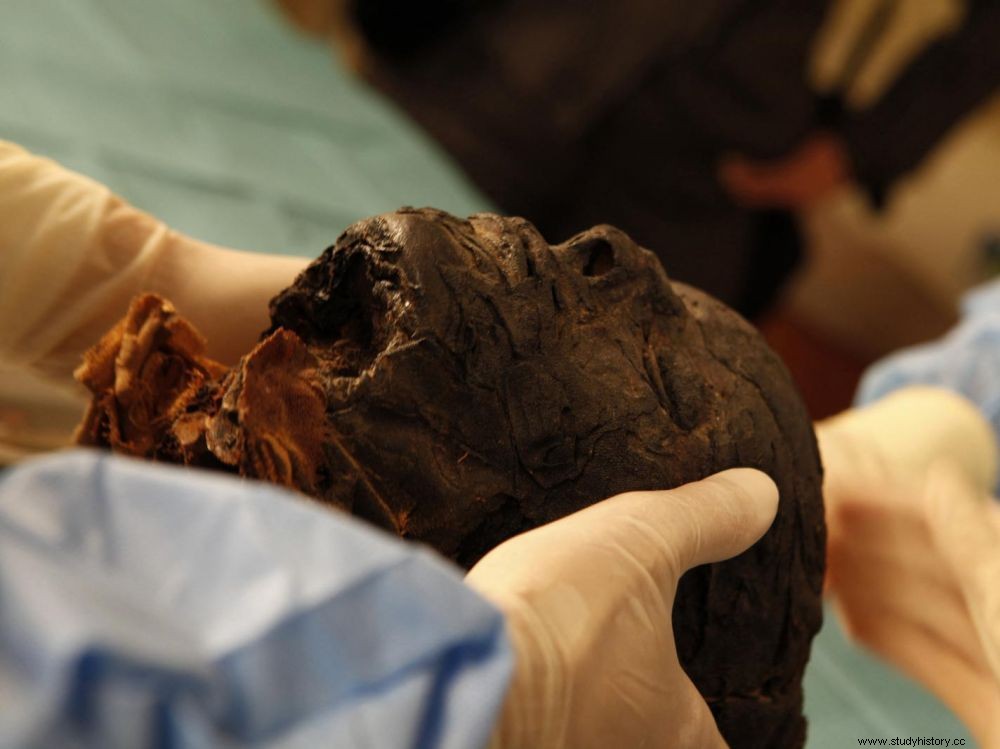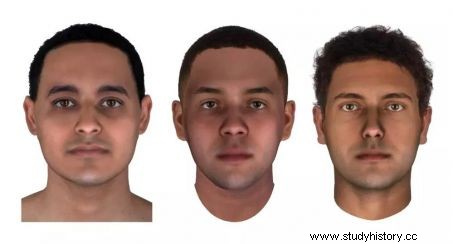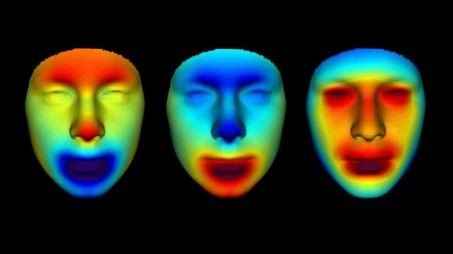An American company specializing in DNA technology has presented a reconstruction of the faces of three Egyptian mummies, all men, aged around 25.

An Egyptian mummy at the Georges Labit Museum in Toulouse, March 3, 2009.
Are we now able to bring the faces of Egyptian mummies and other deceased people from our distant history back to life reliably enough? Yes, claims the world's most famous forensic genetics company, Parabon NanoLabs, which unveiled on September 14, 2021 at the 32nd International Symposium on Human Identification in Orlando, Florida, the digital reconstruction of the faces of three men having lived in ancient Egypt.

The three faces digitally reconstructed by phenotyping. Credits:Parabon Nanolabs
The American company, which specializes in DNA technologies, explains that it was able to make these reconstructions from genetic data extracted from the mummified remains of the three men, all of whom were around 25 years old at the time of their death. Unearthed in Abusir el-Meleq, a now extinct city located in the floodplain south of Cairo, their mummies appear to have been prepared and buried between 1380 BC. AD and 425 AD.
Full phenotyping
In 2017, researchers at the Max Planck Institute for the Science of Human History in Tübingen, Germany, first succeeded in extracting from these remains tissue sufficiently well preserved to allow genetic sequencing, the very first obtained. on mummies. Using this unprecedented data, Parabon NanoLabs researchers were able to perform forensic DNA phenotyping, a process that involves using a genome to predict the shape of facial features or other aspects of the body. an individual's physical appearance. According to the company, this is the first time a comprehensive phenotyping has been performed using such ancient human DNA.

The heat maps of the different faces allowed the scientists to refine the details and highlight the differences in the characteristics of the mummies. Credits:Parabon NanoLabs
Called "Snapshot", their phenotyping method would first have made it possible to determine the ancestry, skin color, hair texture or even the respective facial features of the three men. Secondly, the researchers explain that they created 3D meshes from thermal scans of the mummies' heads. The meshes were then used to recreate their facial features based on their bone structure. Finally, the team combined data from their Snapshot phenotyping with their meshes to create digital portraits of these individuals who lived over 2,000 years ago.
Parabon NanoLabs, an ally of the scientific police
These DNA reconstruction techniques are not new:they have already been used in the context of classified police investigations to allow the identification of victims from their remains. In 2019, Parabon Nanolabs sparked controversy in the United States after helping police track down a suspect in an assault case. The latter had been identified by the company in a DNA testing database, that of GEDMatch, a free website giving users the ability to freely access all results in hopes of finding long-lost relatives. Both genealogists and privacy advocates spoke out against this practice.
